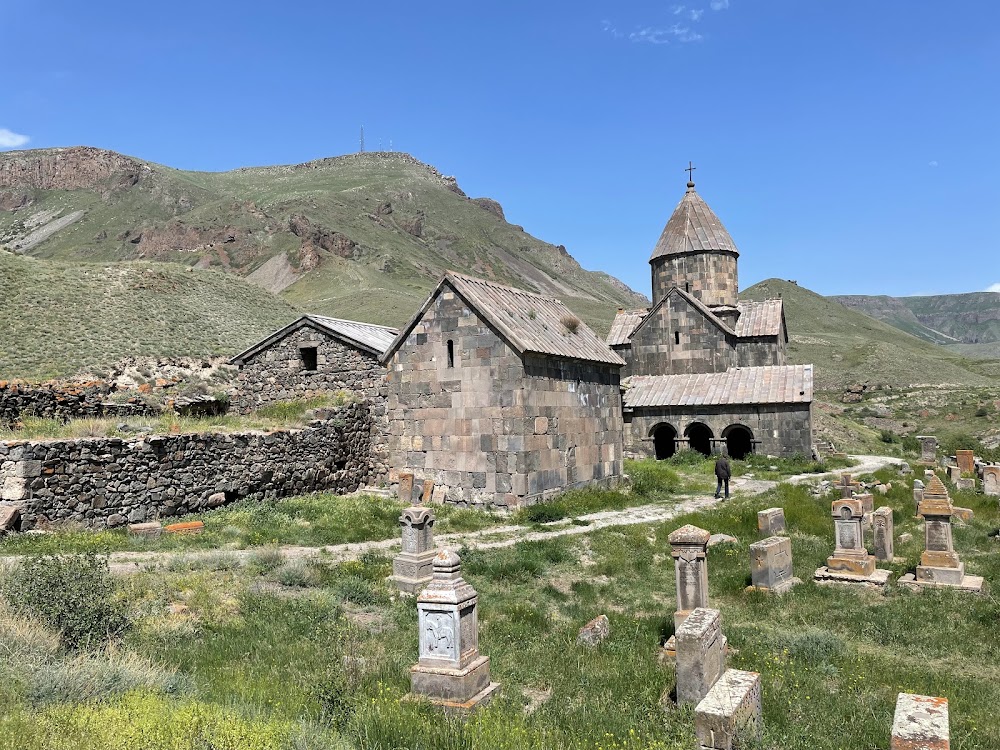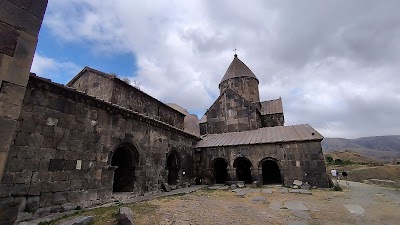Zorats Karer (Զորաց Քարեր)
Overview
Zorats Karer, also known as Karahunj or Carahunge, is a captivating megalithic site nestled in the Syunik Province of Armenia. Often dubbed the "Armenian Stonehenge," this ancient wonder boasts a fascinating circular layout and mysterious stone arrangements that date back to approximately the 6th millennium BC. This remarkable timeline positions Zorats Karer among the oldest known structures of its kind in the world, making it a must-visit for history enthusiasts and travelers alike.
The site features a vast field adorned with hundreds of vertically standing stones, many of which exhibit circular holes carved through their surfaces. These stones are meticulously arranged in various patterns, such as circular rings and linear alignments, sparking diverse theories about their intended purpose. Ranging in height from 0.5 to 3 meters, and some weighing several tons, these monumental stones continue to inspire awe and curiosity among visitors. The name "Zorats Karer" translates to "Stones of the Powerful" in Armenian, reflecting the deep respect and intrigue these ancient stones have commanded throughout history. The term "Karahunj" is thought to derive from "kari" (stone) and "hunj" (voice or sound), hinting that the site may have played a role in ceremonial practices possibly involving sound or music.
Archaeologists and historians have long engaged in lively debates regarding the function of Zorats Karer. One compelling theory posits that it served as an ancient astronomical observatory. The positioning of the stones in relation to celestial bodies supports this idea, with many stones featuring circular holes that align with significant celestial events like the summer and winter solstices. This alignment suggests that the site may have been utilized to track astronomical phenomena, earning Zorats Karer its nickname due to its striking similarities to the famed Stonehenge in England.
In addition to its potential astronomical significance, other theories propose that the stones had religious or ritualistic functions. It is speculated that Zorats Karer could have been a sacred ground where ancient Armenians worshipped their deities, performed rituals, or interred their dead. The discovery of several tombstones and burial sites in and around the area supports the notion that this site may have served as a necropolis or a place of ancestor veneration.
Constructing Zorats Karer would have been a remarkable logistical and engineering feat for the prehistoric peoples of the region. Sourcing and transporting the massive stones from their original quarries to the site, followed by erecting them in precise locations, would have required a high level of coordination and an advanced understanding of both engineering and astronomy. The stones exhibit circular holes created with simple yet effective stone tools, showcasing a rough but functional craftsmanship. The precise alignment of the stones with astronomical events suggests a sophisticated knowledge of seasonal and celestial cycles, hinting at a rich cultural backdrop filled with knowledge and ritual.
Today, Zorats Karer attracts an array of visitors, including tourists, archaeologists, and astronomy enthusiasts, all eager to unravel the mysteries and history surrounding these ancient stones. Efforts by the Armenian government and local organizations to preserve the site ensure that it remains a lasting testament to the ingenuity and spirituality of Armenia's ancient inhabitants.
As ongoing research continues, the enigmatic stories of Zorats Karer may one day be fully uncovered, offering deeper insights into the lives and beliefs of the ancient people who crafted this extraordinary structure. Until then, Zorats Karer stands as a powerful reminder of humanity’s enduring quest to comprehend the universe and our place within it.








